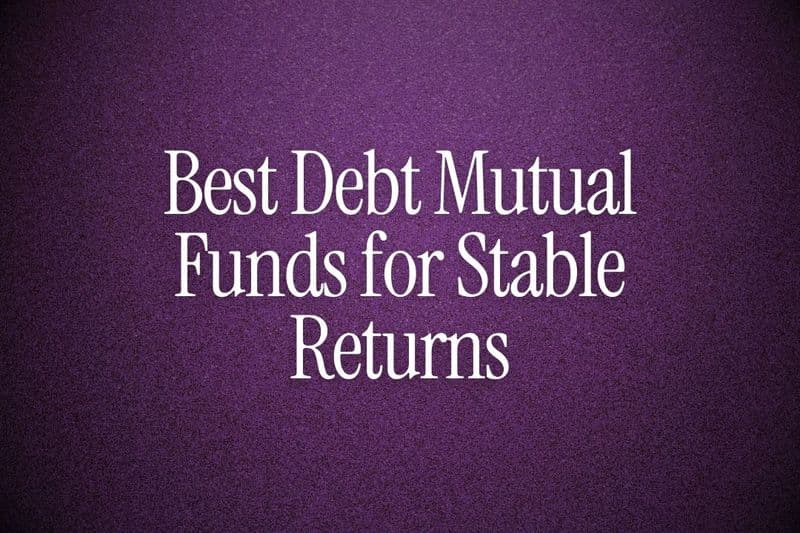
Last month, Rajesh from Dubai called our team at 11 PM. He'd just spent three hours trying to figure out whether to convert his 50,000 AED to rupees first, then invest in an FD-or find something that accepts dirhams directly.
His bank quoted him one rate. An exchange house gave him another. Google showed a third rate. And every website he visited said something different about taxes.
By the time he reached out to us, he was exhausted. "I just want to invest my savings back home without losing money in conversion or messing up my taxes. Why is this so complicated?"
If that sounds familiar, you're not alone. We've helped thousands of UAE-based NRIs navigate this exact challenge at Belong. The confusion isn't your fault-it's the system. Multiple currencies, unclear conversion costs, tax implications, repatriation rules, and a dozen investment options that all claim to be "best for NRIs."
Here's what we've learned after years of helping clients: The stress isn't about picking an investment. It's about understanding what happens to your dirhams the moment they leave Dubai.
This guide covers six proven ways to invest from UAE to India-some that skip conversion entirely, others that make conversion painless. We'll show you exactly what you pay, what you earn, and what you actually get to keep after taxes. No jargon. No hidden catches. Just clear paths that work.
By the end, you'll know exactly which option fits your situation. And if you want help executing any of these, our Belong app and WhatsApp community are here for you.
The Real Problem: It's Not the Investment, It's the Journey
Let's be honest about what actually causes stress when investing from UAE to India.
The Conversion Black Box
You check Google: 1 AED = 24.19 INR (as of October 2025, per XE.com). You go to your bank: they offer 23.65 INR. That's a 0.54 INR difference per dirham-which on 100,000 AED is ₹54,000 lost in spread alone. Then add wire fees, receiving bank charges, and GST.
The Tax Maze
Will you pay tax in India? In UAE? Both? Can you claim DTAA benefits? Do you need a Tax Residency Certificate from UAE? If you're nodding along confused, you're in good company.
Also Read - India-UAE DTAA
The Repatriation Question
You invest ₹10 lakh. It grows to ₹15 lakh. Can you bring all ₹15 lakh back to Dubai? Or just part of it? The answer depends on the account type-NRE, NRO, or GIFT City.
Also Read - How to Repatriate Funds from NRO/NRE Accounts
The KYC Nightmare
Some banks want you to fly to India. Others do video KYC but only during Indian working hours (when you're asleep in Dubai). A few have "Dubai representatives," but they only serve existing customers.
The Time Zone Gap
You want to invest at good rates. But by the time you wake up in Dubai, Indian markets have already moved. Customer support closes at 6 PM IST (4 PM Dubai time)-right when you're free to call.
At Belong, we've designed every product and service to eliminate these friction points. But first, let's understand what your options actually are.
Understanding Your Starting Point: The AED to INR Reality
Before we dive into the six ways, let's get clear on currency conversion-because this is where most money gets lost silently.
What the "Real" Exchange Rate Actually Means
The mid-market rate (what you see on Google) is the rate banks trade with each other. You will never get this rate. Ever. Instead, you get:
Mid-market rate - Spread - Fees = Your actual rate
Here's a real example from October 2025:
What You See | Rate per AED |
|---|---|
Google/XE Rate (mid-market) | ₹24.19 |
Exchange House in Dubai | ₹23.65 to ₹23.85 |
Your Bank's "Special NRI Rate" | ₹23.50 to ₹23.75 |
Wire Transfer Fees | AED 25-50 per transaction |
Indian Bank Receiving Charges | ₹200-500 |
So when you send 100,000 AED:
- At Google rate: You expect ₹24,19,000
- Reality: You receive ₹23,50,000 to ₹23,75,000
- Loss: ₹44,000 to ₹69,000
That's before you've even started investing.
👉 Tip: Use our Rupee vs Dollar Tracker to monitor AED/USD and INR trends-helpful for timing large transfers.
The Three Conversion Routes
Route 1: Convert in UAE, Send Rupees
You exchange AED to INR at an exchange house in Dubai, then wire transfer rupees to your Indian bank account.
Pros: Simple, you see exactly what you're sending
Cons: Highest conversion loss, double fees (exchange + wire)
Route 2: Send Foreign Currency, Convert in India
You wire transfer AED/USD from Dubai to your NRE/FCNR account, and the receiving bank converts at their rate.
Pros: Banks sometimes offer better rates for large amounts
Cons: You don't know final INR amount until it arrives, NRE account charges apply
Route 3: Skip Conversion Entirely (GIFT City)
You keep dollars (or convert AED to USD once), deposit in GIFT City USD accounts, earn USD interest.
Pros: Zero conversion loss, no rupee depreciation risk, tax-free returns
Cons: Need to open GIFT City account (Belong makes this easy)
Each of the six investment methods below uses one of these routes. We'll tell you which.
Way 1: GIFT City USD Fixed Deposits (Zero Conversion, Zero Stress)
Start with the option that completely eliminates conversion stress.
How It Works
You convert your dirhams to US dollars once in Dubai (AED to USD rate is stable, around 3.67-3.68 per current markets). Then you deposit those dollars in a GIFT City fixed deposit through banks like ICICI GIFT IBU, HDFC GIFT, or Axis GIFT City.
Your dollars stay dollars. They earn interest in dollars. At maturity, you receive dollars-which you can keep offshore, bring to UAE, or convert to INR if needed.
Real Example
You have 100,000 AED.
Step 1: Convert to USD in Dubai
100,000 AED ÷ 3.67 = $27,248 USD
(Small spread loss: ~$100-150)
Step 2: Deposit in GIFT City 2-year USD FD at 6%
$27,248 × (1 + 0.06)² = $27,248 × 1.1236 = $30,616 USD
Step 3: Decide what to do
- Keep in USD (hedge against rupee depreciation)
- Convert to AED: 30,616 × 3.67 = 112,361 AED
- Convert to INR: 29,727 × 85 (assumed future rate) = 26,02,360
Why This Works for Dirham Earners
You think in dirhams. You earn in dirhams. You eventually want dirhams or dollars-not rupees that might weaken. This route respects that reality.
Tax-free. Interest earned on GIFT City deposits is completely tax-free in India under IFSC regulations. UAE has no income tax. You keep 100% of the 6%.
Full repatriation. Move money back to UAE anytime, no limits, no approvals.
Tenure flexibility. Deposit for 7 days to 10 years. Premature withdrawal allowed (small penalty).
How Belong Helps
Opening GIFT City accounts traditionally required Indian address proof, physical signatures, endless documentation. We've streamlined this:
- Download Belong app
- Complete digital KYC (10 minutes, from Dubai)
- Wire transfer from your UAE bank (we provide exact instructions)
- Your GIFT City USD FD is live
We handle the bank coordination, documentation, and compliance. You just decide the amount and tenure.
Who should use this: Anyone earning in AED/USD who wants zero conversion stress, tax-free returns, and flexibility. Perfect for amounts above $5,000.
Read more: GIFT City Fixed Deposits for NRIs
Way 2: NRE Fixed Deposits (The Tax-Free Rupee Option)
If you're comfortable with rupees and want tax-free interest, NRE FDs are your classic choice.
How It Works
You transfer foreign currency (AED/USD) from Dubai to your NRE account in India. It converts to rupees. You book an FD. Interest is tax-free, fully repatriable.
Real Example
100,000 AED → Bank converts at 23.70 INR = ₹23,70,000
Deposit in 3-year NRE FD at 6.5%
Maturity: ₹23,70,000 × (1 + 0.065)³ = ₹28,61,736
But here's the catch: If the rupee weakens from 24 to 28 against dirham over 3 years, your real return in AED terms shrinks significantly.
Conversion Route for NRE FDs
Option A: Convert AED to INR in Dubai, send rupees
Cost: High spread + wire fees
Option B: Send USD/AED to bank, they convert
Cost: Bank's conversion spread (better for amounts above $10,000)
👉 Tip: Compare NRE FD rates across 15+ banks using our FD Comparison Tool. Rates vary by 0.5-1%-which on ₹20 lakh is ₹10,000-20,000 difference annually.
Tax Treatment
In India: Interest is tax-free (no TDS deducted)
In UAE: No income tax
DTAA: Not relevant since India doesn't tax it
When NRE Makes Sense
- You're planning to spend in India (retirement home, kids' education)
- You're comfortable with rupee exposure
- You want simplicity and wide bank availability
How to Open
Most Indian banks in UAE offer NRE accounts: State Bank of India, ICICI Bank, HDFC Bank. You can also open online if you already have an Indian bank relationship.
Who should use this: NRIs comfortable with rupee exposure, planning India expenses, wanting tax-free guaranteed returns.
Read more: NRE vs NRO vs FCNR Accounts
Way 3: Debt Mutual Funds (Better Returns, Smart Tax Planning)
For goals 3-5 years away, debt mutual funds often beat FDs-if you structure them correctly.
How It Works
You transfer money to your NRE/NRO account (converts to rupees). You invest in debt mutual funds through Indian AMCs. Fund managers invest in government bonds, corporate debt, and money market instruments.
Real Example
₹20 lakh invested in a corporate bond fund for 4 years:
- Expected return: 7-8% annually
- After 4 years: ₹20,00,000 × (1.075)⁴ = ₹26,64,779
- vs NRE FD at 6.5%: ₹25,68,527
- Gain: ₹96,252 extra
Conversion Route
Same as NRE FDs-transfer foreign currency, it converts to rupees. Most AMCs accept NRE account funding.
Tax Treatment for UAE Residents
This is where it gets interesting:
Debt funds are taxed at slab rate (Upto 30%) irrespective of holding period
Since you're a UAE resident with zero UAE income tax, you file Indian returns as NRI. If your only India income is mutual fund gains, your effective tax can be minimal.
Example:
Long-term gain: ₹5 lakh
After indexation (assume 1.15 for 4 years): Taxable gain = ₹4 lakh
Tax: ₹4 lakh × 20% = ₹80,000
But if below ₹2.5 lakh after deductions, zero tax
👉 Tip: Consult our network CAs through the Belong WhatsApp community for personalized tax planning.
Best Debt Funds for NRIs
- Short Duration Funds: 1-3 year horizon, 6-7% returns
- Corporate Bond Funds: 3-5 years, 7-8% returns
- Banking & PSU Funds: Lower risk, 6.5-7.5% returns
How to Invest
You'll need:
- NRE/NRO account
- Demat account (optional but recommended)
- Indian PAN card
- Complete KYC with AMC
Platforms like Groww, Kuvera, and Zerodha support NRI mutual fund investments.
Who should use this: NRIs with 3-5 year goals, wanting to beat FD returns, comfortable with slight volatility (debt funds can have 1-2% fluctuation).
Read more: How NRIs Can Invest in Mutual Funds
Quick Comparison: The First Three Ways
Feature | GIFT City USD FD | NRE FD | Debt Mutual Funds |
|---|---|---|---|
Conversion Needed | AED→USD (once) | AED→INR | AED→INR |
Currency Held | USD | INR | INR |
Returns | 4.5-6% USD | 6-7.5% INR | 7-8% INR |
Tax in India | Zero | Zero | Taxed at slab rate (Upto 30% |
Tax in UAE | Zero | Zero | Zero |
Rupee Risk | None | High | High |
Liquidity | Fixed tenure (penalty on early withdrawal) | Fixed tenure | Redeem anytime |
Minimum Amount | $1,000 | ₹25,000 | ₹5,000 |
Repatriation | Fully | Fully | Through NRO: $1M/year |
Best For | Dollar thinkers | Rupee-comfort | Better returns |
Way 4: GIFT City Alternative Investment Funds (For Serious Capital)
If you're sitting on 500,000 AED or more, GIFT City AIFs open doors to institutional-grade investments.
How It Works
AIFs are pooled investment vehicles that invest in private equity, venture capital, real estate, structured debt, or hedge strategies. Think of them as sophisticated mutual funds for HNWIs.
GIFT City AIFs are denominated in USD and regulated by IFSCA under SEBI norms.
Real Example
You invest $150,000 in a Category II AIF focused on Indian mid-market private equity.
- Expected return: 12-15% annually over 5 years
- Lock-in: 3 years
- After 5 years: $150,000 × (1.14)⁵ = $287,904
In AED terms: 287,904 × 3.67 = 1,056,607 AED
Conversion Route
AED → USD (one-time, in Dubai) → Direct investment in AIF (no further conversion)
Why This Works
Tax efficiency. Long-term capital gains from GIFT City AIFs enjoy favorable tax treatment under IFSC rules. Exact treatment depends on fund structure-consult with the fund.
Diversification. Access to asset classes you can't easily reach otherwise: venture capital in Indian startups, structured debt with collateral, real estate funds.
Professional management. Top-tier fund managers from HDFC AMC, SBI Funds, Kotak AMC, and international houses like Morgan Stanley.
Dollar-denominated. Like GIFT City FDs, you avoid rupee risk entirely.
The Catch
High minimum: $150,000 (per IFSCA regulations)
Lock-in: 3 years typically
Complexity: Not as simple as FDs; you're dealing with fund terms, capital calls, and exit structures
How Belong Helps
We've curated 15+ vetted AIFs on our GIFT City AIF page. We show you:
- Past returns (where disclosed)
- Fund strategy in plain English
- Fee structure (management + performance fees)
- Minimum lock-in and exit terms
We also connect you directly with fund managers for Q\&A calls.
Who should use this: HNWIs with $150K+ to lock in for 3-5 years, seeking higher returns than FDs, comfortable with moderate risk.
Read more: Understanding Alternative Investment Funds
Way 5: Equity Mutual Funds (For Long-Term Growth)
If your goal is 7-10 years away-kids' college, retirement-equity mutual funds offer the best inflation-beating potential.
How It Works
Same as debt funds, but these invest in stocks. Higher risk, higher potential returns.
Real Example
₹25 lakh invested in a diversified equity fund for 10 years:
- Conservative return: 10% annually
- After 10 years: ₹25,00,000 × (1.10)¹⁰ = ₹64,84,375
- vs FD at 6.5%: ₹46,98,896
- Extra gain: ₹17,85,479
Conversion Route
AED/USD → INR (through NRE/NRO account) → Invest in equity funds
Tax Treatment
Short-term (\< 1 year): 20% tax on gains
Long-term (> 1 year): 12.5% tax on gains above ₹1.25 lakh per year
Since you're an NRI, file Indian tax return to report this. No tax in UAE.
Risk Reality Check
Equity markets can drop 20-30% in bad years. You need:
- Time horizon of 7+ years
- Stomach for volatility
- Discipline to not panic-sell
If you're thinking "I'll need this money in 2-3 years," stick with debt funds or FDs.
Best Equity Funds for NRIs
According to performance data from AMCs (as of October 2025):
- Large Cap Funds: 9-11% historical returns, lower volatility
- Flexi Cap Funds: 11-13% returns, invest across market caps
- Index Funds: 10-12% returns, lowest fees
👉 Tip: Read our guide on Best Mutual Funds for NRIs before choosing.
How to Invest
Same platforms as debt funds-Groww, Kuvera, Zerodha, or directly through AMCs.
Who should use this: Long-term investors with 7-10+ year horizons, comfortable with market ups and downs, wanting to beat inflation.
Read more: Mutual Fund Investing for NRIs
Way 6: NRO Fixed Deposits (For India-Sourced Income)
This one's different-it's not for your Dubai earnings. It's for money you already have in India.
How It Works
If you earn rental income, dividends, pension, or any other India-sourced income, that money sits in an NRO account. You can deploy it into NRO FDs.
Real Example
You rent out your Mumbai flat for ₹50,000/month = ₹6 lakh annually.
After tax, you have ₹4.5 lakh in NRO account.
Invest in 5-year NRO FD at 7%:
Maturity: ₹4,50,000 × (1.07)⁵ = ₹6,31,240
Conversion Route
None. Money is already in rupees in India.
Tax Treatment
Interest: 30% TDS deducted at source (plus surcharge). You can claim refund when filing return if your actual tax rate is lower.
Principal: If you want to move it back to UAE, repatriation is capped at $1 million per financial year across all NRO accounts.
Why Use NRO FDs
You can't send it elsewhere anyway. India income stays in India unless repatriated under limits. Might as well earn interest.
Better than savings account. NRO savings accounts give 2.5-3%. FDs give 7-7.5%.
No AED conversion stress. You're not bringing new money-just optimizing what's already there.
How to Open
If you receive India income, you likely already have an NRO account. Just log in and book an FD.
Who should use this: NRIs with rental income, pension, dividends, or other India earnings who want to earn on idle balances.
Read more: Tax Rules on NRI Accounts
The Complete Picture: All Six Ways Compared
Method | Min. Amount | Returns | Tax | Conversion | Repatriation | Best For |
|---|---|---|---|---|---|---|
GIFT City USD FD | $1,000 | 4.5-6% | Tax-free | AED→USD | Full | Dollar savers |
NRE FD | ₹10,000 | 6-7.5% | Tax-free | AED→INR | Full | Tax-free rupee |
Debt Funds | ₹5,000 | 7-8% | Slab rate (Upto 30%) | AED→INR | Full (NRE) or $1M/year (NRO) | Beat FDs |
GIFT City AIFs | $150,000 | 12-15% | 10% LTCG (>12M), 15% STCG (≤12M), some exemptions | AED→USD | Full | HNWIs |
Equity Funds | ₹5,000 | 10-13% | 20% STCG; 12.5% LTCG ; TDS 20%/12.5% | AED→INR | Full (NRE) or $1M/year (NRO) | Long-term |
NRO FD | ₹10,000 | 6-7.5% | 30% TDS | None | $1M/year | India income |
Real Case Study: How Priya Allocated Her Savings
Priya, 38, works in Abu Dhabi as a marketing manager. She saves 15,000 AED/month. She also has a flat in Pune generating ₹40,000/month rent. Here's how she structured her investments with Belong's help:
Her Goals
- Emergency fund: 6 months expenses (50,000 AED)
- Kids' education: 8 years away (need $80,000)
- Retirement: 20 years away (build corpus)
- Rent money: Optimize idle rental income
Her Allocation
Goal 1 - Emergency Fund: GIFT City USD FD
- 50,000 AED → $13,624 USD
- Parked in 1-month rolling FD at 4% (liquidity + some return)
Goal 2 - Kids' Education: Mix of GIFT City + Equity Funds
- 60% in GIFT City 5-year USD FD at 4.8%
- 40% in large-cap equity funds (INR) for higher growth potential
- Monthly SIP of 3,000 AED
Goal 3 - Retirement: GIFT City AIF + Equity Funds
- $150,000 one-time in GIFT City AIF (from accumulated savings)
- Rest via monthly SIPs in flexi-cap equity funds
Goal 4 - Rent Optimization: NRO FD
- Rental income (₹40,000/month) accumulates in NRO account
- Every quarter, ₹4.5 lakh booked in 3-year NRO FD at 7.2%
Results After 3 Years
- Emergency fund stayed liquid, earned modest USD return
- Education fund grew to $65,000 (on track for $80K target)
- Retirement corpus crossed $220,000 (AIF performing at 14%)
- Rental FDs matured with ₹18 lakh corpus (after tax)
Her biggest lesson: "I used to stress about converting every dirham optimally. Belong showed me that eliminating conversion stress entirely (GIFT City) was smarter than chasing 0.1% better conversion rates."
Step-by-Step: How to Start (This Week)
Don't let this become another "I'll do it later" bookmark. Here's your action plan:
Step 1: Calculate What You Want to Invest (Day 1)
Break your savings into buckets:
- Emergency fund (needs liquidity)
- Short-term goals (1-3 years)
- Medium-term goals (3-7 years)
- Long-term goals (7+ years)
Match each bucket to one of the six ways above.
Step 2: Check Your Tax Status (Day 1)
Use our Residential Status Calculator to confirm you're classified as NRI. This determines your tax treatment.
Step 3: Open Accounts (Days 2-7)
For GIFT City options (Ways #1 and #4):
- Download Belong app
- Complete digital KYC (10 minutes)
- We guide you through account opening
For traditional options (Ways #2, #3, #5, #6):
- Contact your existing Indian bank for NRE/NRO accounts
- Or use banks with UAE presence: SBI, ICICI, HDFC, Axis
Step 4: Fund Your Accounts (Week 2)
For GIFT City: Wire transfer USD from your Dubai bank (we provide exact instructions)
For NRE/NRO: Wire transfer through your bank's NRI remittance service
👉 Tip: Transfer larger amounts (50,000 AED+) in single transactions to reduce per-transaction fees.
Step 5: Make Your First Investment (Week 2)
FDs: Book directly through bank portal or Belong app
Mutual Funds: Use platforms like Groww or Kuvera
AIFs: We connect you with fund managers
Step 6: Set Up Tracking (Week 3)
Use Belong app to:
- Track all your India investments in one place
- Monitor exchange rate trends
- Get alerts when FDs mature
- Calculate tax liabilities
Step 7: Join Our Community (Today)
The Belong WhatsApp community has 10,000+ UAE-based NRIs sharing:
- Real-time exchange rate tips
- Tax filing advice
- Investment opportunities
- Answers from our team
Tax Tips Every UAE-Based Investor Needs
Let's address the elephant in the room: tax compliance.
Tip 1: Understand India-UAE DTAA
The Double Taxation Avoidance Agreement between India and UAE ensures you don't pay tax twice. Key points:
- If you're a UAE tax resident and pay zero tax there, you still owe tax on India-sourced income at India rates
- But you can claim Foreign Tax Credit when filing UAE tax return (though UAE has zero personal tax, so this rarely matters)
- DTAA reduces withholding tax on dividends, interest in some cases
Tip 2: Get a UAE Tax Residency Certificate (TRC)
Even though UAE has no income tax, get a TRC from Federal Tax Authority. You'll need it to claim DTAA benefits when filing Indian returns.
Cost: Free
Process: Online through FTA portal
Time: 7-10 days
Tip 3: File Indian Tax Returns Even If No Tax Due
If you have India income or investments, file annual returns (ITR-2 for NRIs). Benefits:
- Claim TDS refunds on NRO interest
- Document compliance for repatriation
- Avoid notices from tax department
Deadline: July 31st each year
Tip 4: Track Your Residential Status Annually
Your residential status (NRI vs RNOR vs Resident) can change based on days spent in India. This affects what's taxable.
Use our calculator every April.
Tip 5: Keep Receipts for Everything
When you eventually want to repatriate money:
- Original remittance proof (when you sent money to India)
- Investment documents
- Tax returns showing income was taxed/exempt
- CA certificate if required
Missing documentation can delay repatriation by months.
Common Mistakes to Avoid (We See These Every Week)
Mistake #1: Optimizing for 0.1% Better Conversion Rate
Client spends 3 hours researching to save ₹500 on a ₹5 lakh transfer. Then loses ₹50,000 by investing in a poor product because they were exhausted.
Fix: Use reliable converters (banks, regulated exchanges), focus energy on picking the right investment.
Mistake #2: Not Considering Rupee Depreciation
₹10 lakh grows to ₹15 lakh in 5 years (50% gain!). But rupee weakened 25% vs dollar in same period. Real gain in dollar terms: just 12.5%.
Fix: If you think in dollars/dirhams, invest in dollar products (GIFT City).
Mistake #3: Mixing Resident and NRI Accounts
You move to Dubai but keep your old resident savings account active. That's a FEMA violation.
Fix: Convert to NRE/NRO within reasonable time (3-6 months) of becoming NRI.
Mistake #4: Not Reading the NRO Repatriation Limit
Client invests ₹2 crore in NRO FDs thinking they can move it all to Dubai when needed. Then learns it's capped at $1 million/year.
Fix: Use NRE or GIFT City for amounts you want full freedom to move.
Mistake #5: Ignoring Tax Filing
"I don't owe any tax, why file returns?" Then they need to repatriate money and can't prove source of funds.
Fix: File every year even if zero tax. It's documentation for your future.
Why We Built Belong for This Exact Problem
Let us tell you why this matters so much to us.
I've seen too many smart, hardworking NRIs lose money not because they made bad investment choices, but because the system made it unnecessarily complex to deploy their savings.
The bank that gave you a "special NRI rate" pocketed ₹40,000 in hidden spread. The portal that charged "zero fees" loaded a 3% markup into exchange rates. The advisor who said "just invest in this NRE FD" didn't mention GIFT City existed.
At Belong, our mission is simple: Make investing from UAE to India as stress-free as investing within Dubai.
That means:
What We've Built
1. GIFT City Access Made Simple
- Open USD FD accounts in 10 minutes from Dubai
- Digital KYC, no flying to India
- Doorstep documentation assistance if needed
- Live rates across 5 banks
2. Transparent Comparison Tools
- FD Rate Explorer: Compare 50+ banks
- AED/USD/INR Tracker: Know when to convert
- Compliance Compass: Check if you're following all rules
3. Curated Investment Options
- Vetted AIFs starting at $150K
- Bond funds and mutual funds pre-screened for NRI eligibility
4. A Community That Gets It
- 10,000+ UAE-based NRIs in our WhatsApp groups
- Weekly webinars with CAs, fund managers, tax experts
- Real advice from people living your exact situation
5. Concierge Support
- Dedicated relationship managers
- Help with paperwork, KYC, transfers
- Tax filing support through partner CAs
We're not trying to sell you something. We're trying to eliminate the friction that keeps your money stuck in a Dubai savings account earning 0.1% when it could be working harder in India.
Download Belong today and see how much simpler this can be.
Your Next Three Actions
Reading is the easy part. Here's what to do:
Action 1 (5 minutes): Use our FD Rate Comparison Tool to see current rates on all six investment types.
Action 2 (10 minutes): Join our WhatsApp community. Ask your specific question-we or community members will answer within hours.
Action 3 (20 minutes): Download Belong app. Even if you don't invest immediately, complete your profile. When you're ready, everything will be set up.
The dirhams you're earning in Dubai are too hard-earned to lose in conversion spreads or sit idle in low-yield accounts. Make them work harder.
Conclusion: From Stress to Clarity
Remember Rajesh from the beginning-the guy calling us at 11 PM, confused about conversion rates?
Three months later, here's his setup:
- Emergency fund: $20,000 in GIFT City 3-month rolling FD
- House down payment goal: $80,000 split between GIFT City FD and debt funds
- Retirement: Monthly SIP in equity funds
- Rental income from Bangalore flat: NRO FDs
Total time spent getting started: 4 hours over 2 weeks.
Total conversion loss: Under $200 (vs the $5,000+ he'd have lost doing bank transfers randomly).
Peace of mind: Priceless.
Your dirhams don't have to be stuck in UAE accounts earning nothing because investing in India seems complicated. With the right approach-and the right tools-it's actually straightforward.
Pick one of the six ways above. Start small if you want. But start.
Your future self will thank you.
P.S. If you found this guide helpful, share it with other NRIs in Dubai. They'll appreciate it. And if you have questions, we're just a message away on WhatsApp.
Sources:




